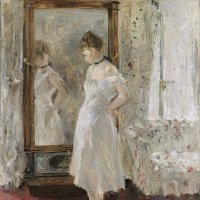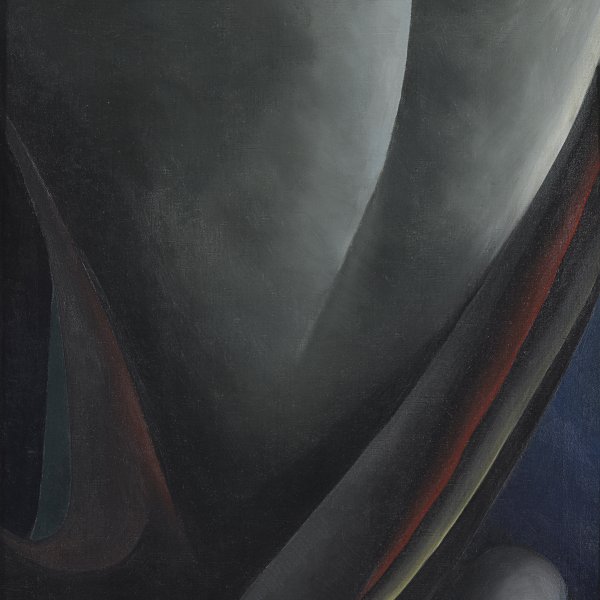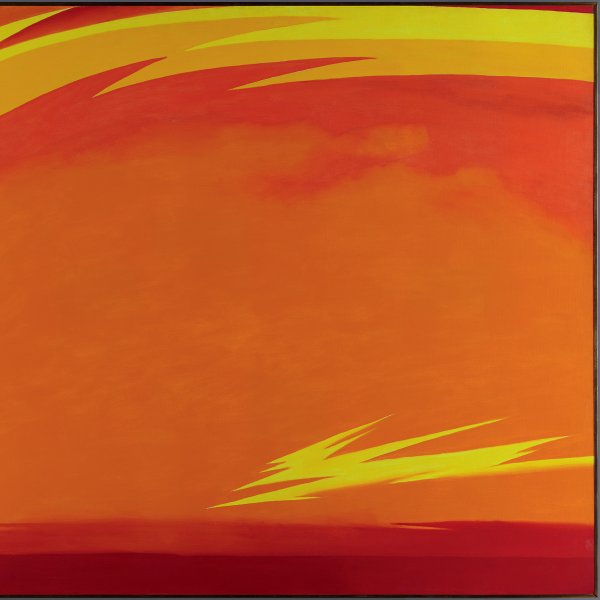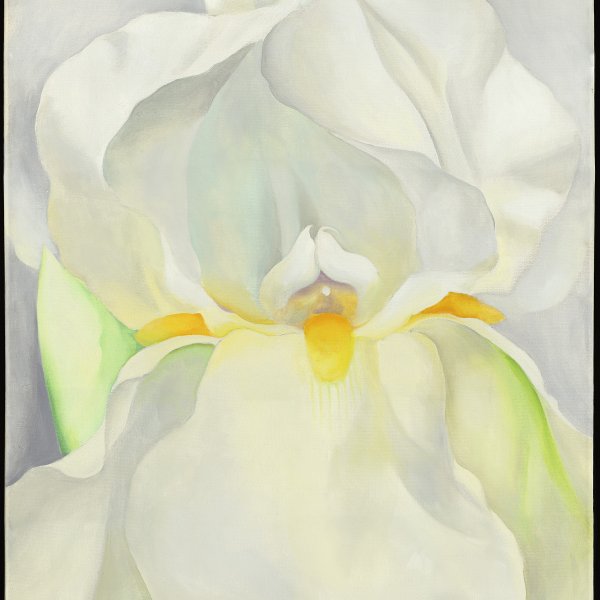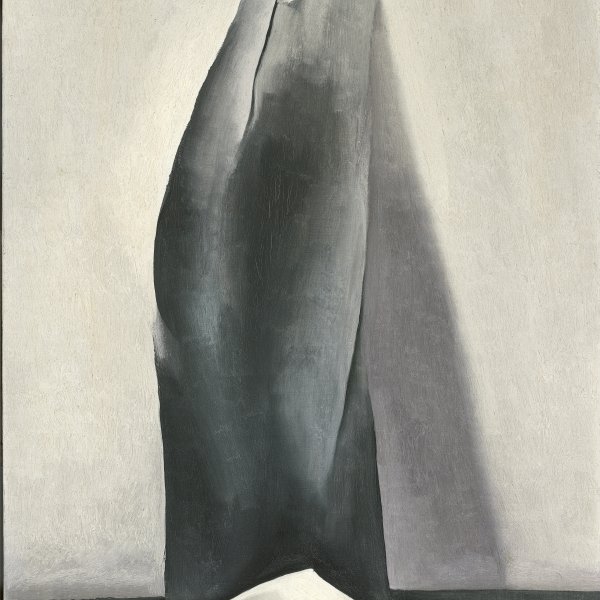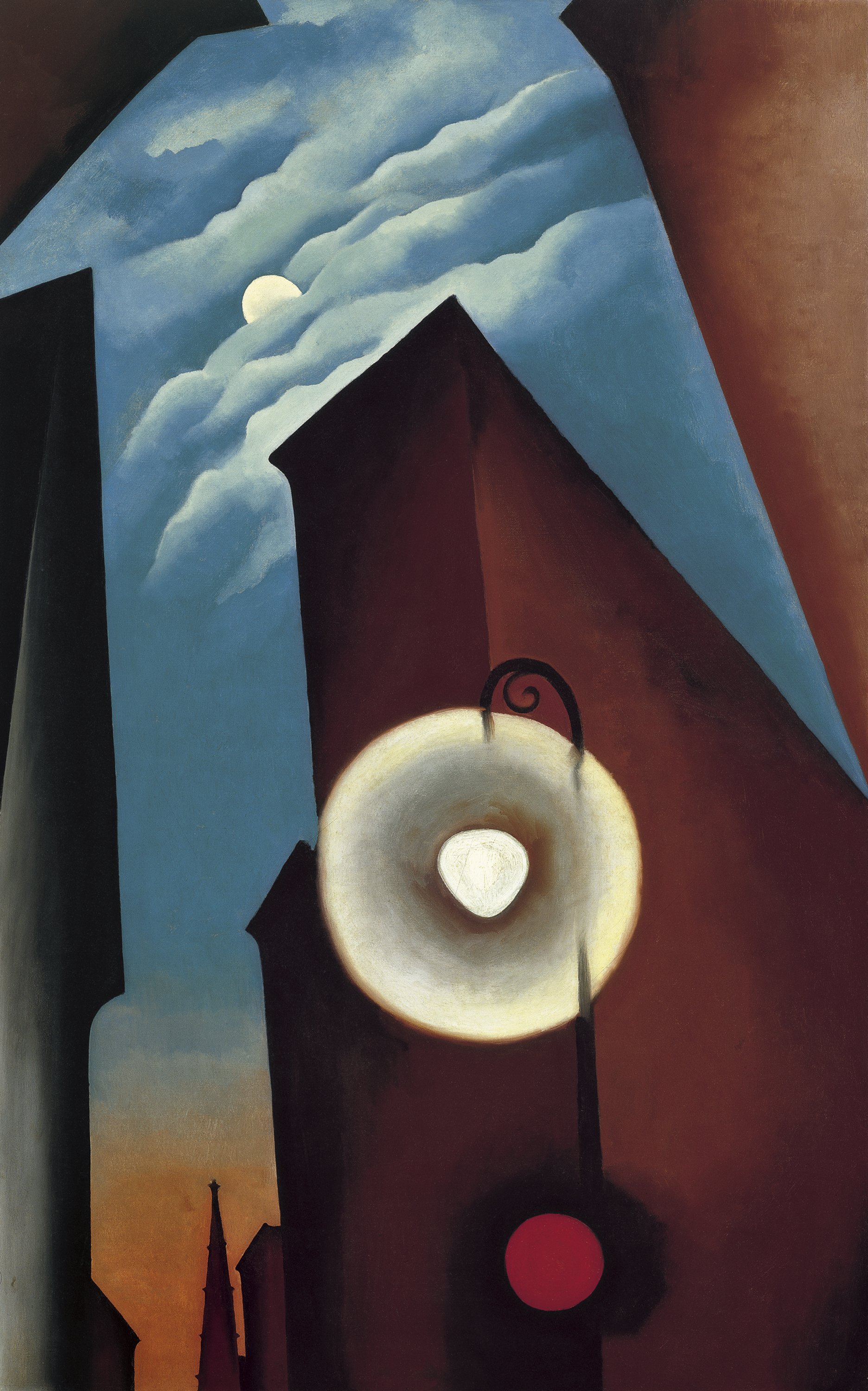New York Street with Moon
‘One can’t paint New York as it is, but rather as it is felt.’ With these words, the North American painter Georgia O’Keeffe neatly conveys her passion for the skyscraper city, as well as her idea of art as a medium for expressing her emotions and her vision of the world. In New York with Moon, the first of her many views of the great metropolis, the dusk sky and the moon, peeping out from fluffy clouds, are framed by towering buildings cast in shadow, in the centre of which there is a streetlight with a somewhat unearthly aura. The simplified forms and the low-angled composition, reminiscent of photography and of Precisionism, contribute to the personal symbolism characteristic of her mature work.
Georgia O'Keeffe recalled that when she painted New York Street with Moon in 1925, it was her first painting of the city. She was living in two rooms on the 30th floor of the Shelton on Lexington Avenue. She remembered: "I had never lived up so high before and was so excited that I began talking about trying to paint New York." This depiction of 47th Street at night was her first New York painting. She noted: "There was a street light in the upper foreground at about the Chatham Hotel."
O'Keeffe had hoped to show New York Street with Moon in Seven Americans, a show that her husband Alfred Stieglitz organised at the Anderson Galleries in 1925. However, Stieglitz pointed out to her that even men found it difficult to paint New York skyscrapers and refused to allow her to show this picture, preferring instead to exhibit her more feminine, large-scale flower paintings. The next year, in her own show at The Intimate Gallery, she insisted that Stieglitz hang this picture, which sold the first day for $1, 200. She gloated: "From then on they let me paint New York."
The hard edges of O'Keeffe's city scenes in the 1920s are related to work by her contemporaries who are as Precisionists, including Charles Demuth, Charles Sheeler, George Ault and Louis Lozowick. This style is also related to the work of contemporary photographers, in particular the work of Stieglitz himself, but also others in their circle, such as Paul Strand. In this optimistic period, the skyscraper usually symbolized modernity and progress.
O'Keeffe once admitted: "One can't paint New York as it is, but rather as it is felt." Her skyscraper paintings, with their sense of crowding, airlessness and oppression, suggest the displaced nature-lover who grew up in the mid-western countryside. O'Keeffe is as always fascinated by the moon and the sun, as befits a girl who grew up under the broad skies of the Wisconsin prairie.
In New York Street with Moon, the round white disk of the moon slips sensuously in and out of the passing clouds. The sky is still blue, but the buildings, cast in shadow are mere silhouettes against it. The street light by the Chatham seems an unearthly presence, its aura almost like a halo. And the red sky of dusk at the base of the painting, setting off the spire of a church steeple creates a Surrealist-like effect, although O'Keeffe was probably unaware of such work by her contemporaries in Paris at this early date. In 1926, the critic Henry McBride labelled her "at times a mystic, " noting: "In her studies of architecture she breaks passages of literalness with items that throw symbolic lights into the composition."
O'Keeffe continued to explore this theme in subsequent cityscapes such as Shelton Hotel, New York No. 1, 1926; City Night, 1926; The Shelton with Sunspots, 1926; Radiator Building-Night, New York, 1927; and New York Night, 1929. She seems to have preferred the mystery of nocturnal scenes rather than the raking sunlight she loved for flowers and other rural architectural subjects. By 1929, O'Keeffe, having shown that it did not take a man to deal effectively with the structures of the city, turned her focus elsewhere.
Gail Levin

